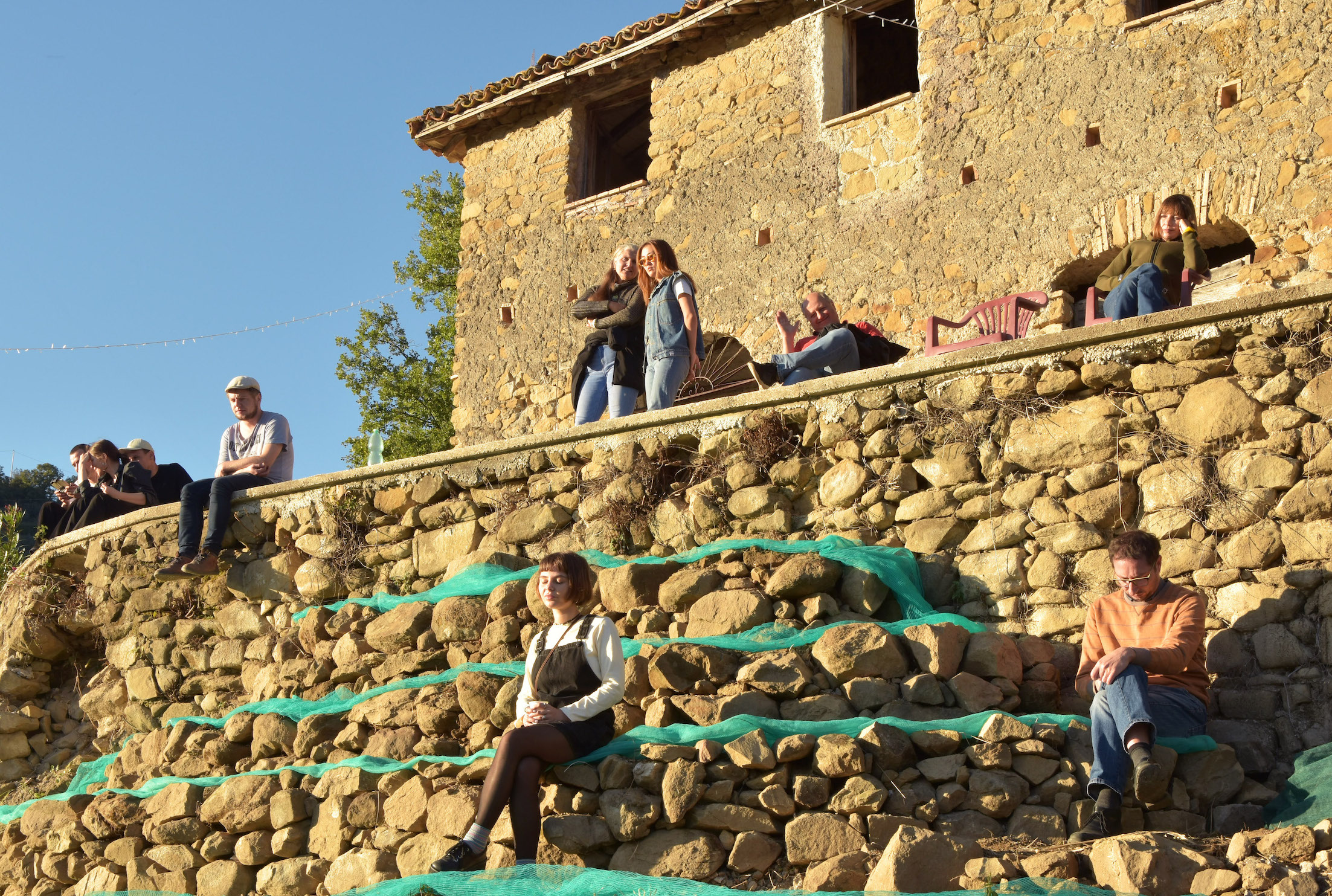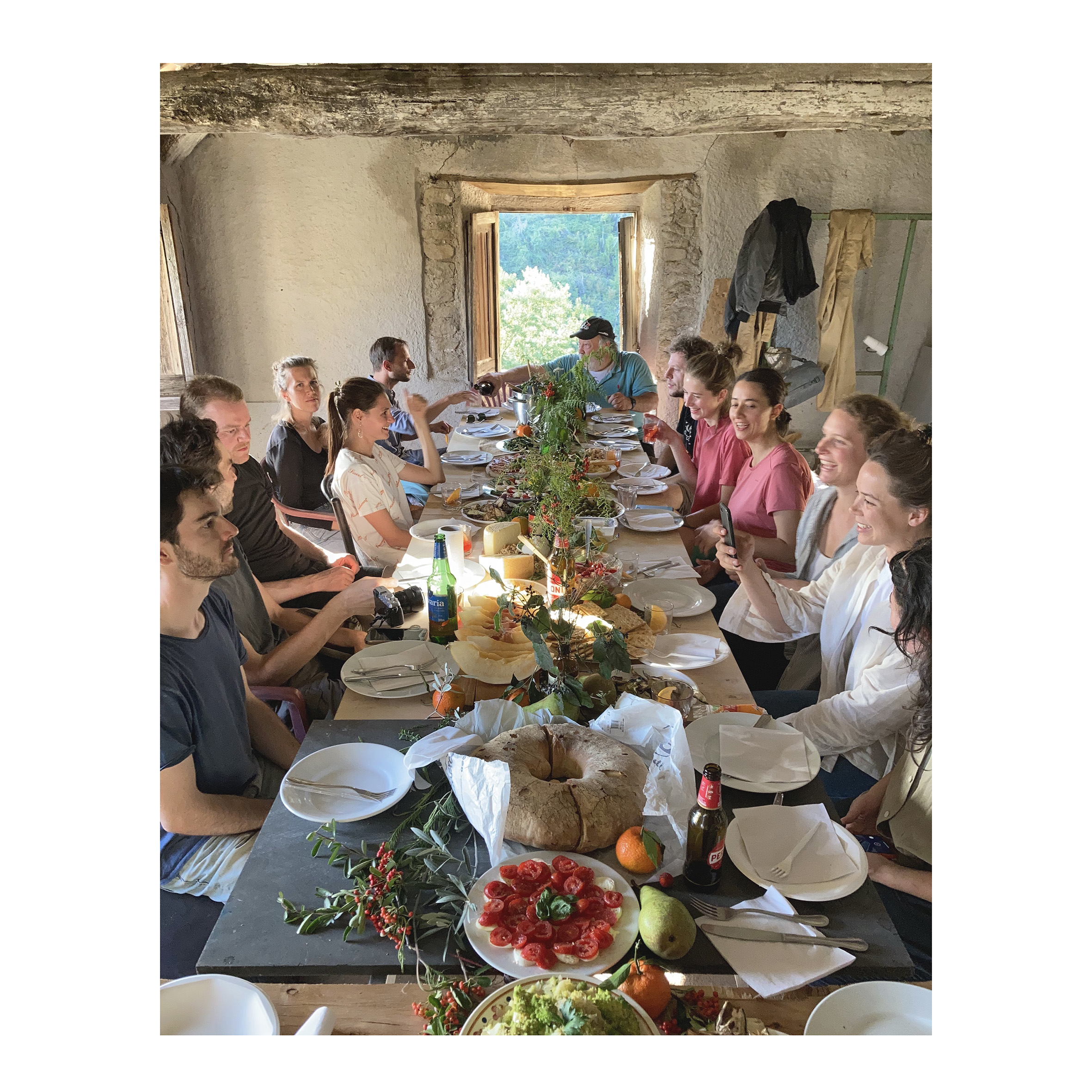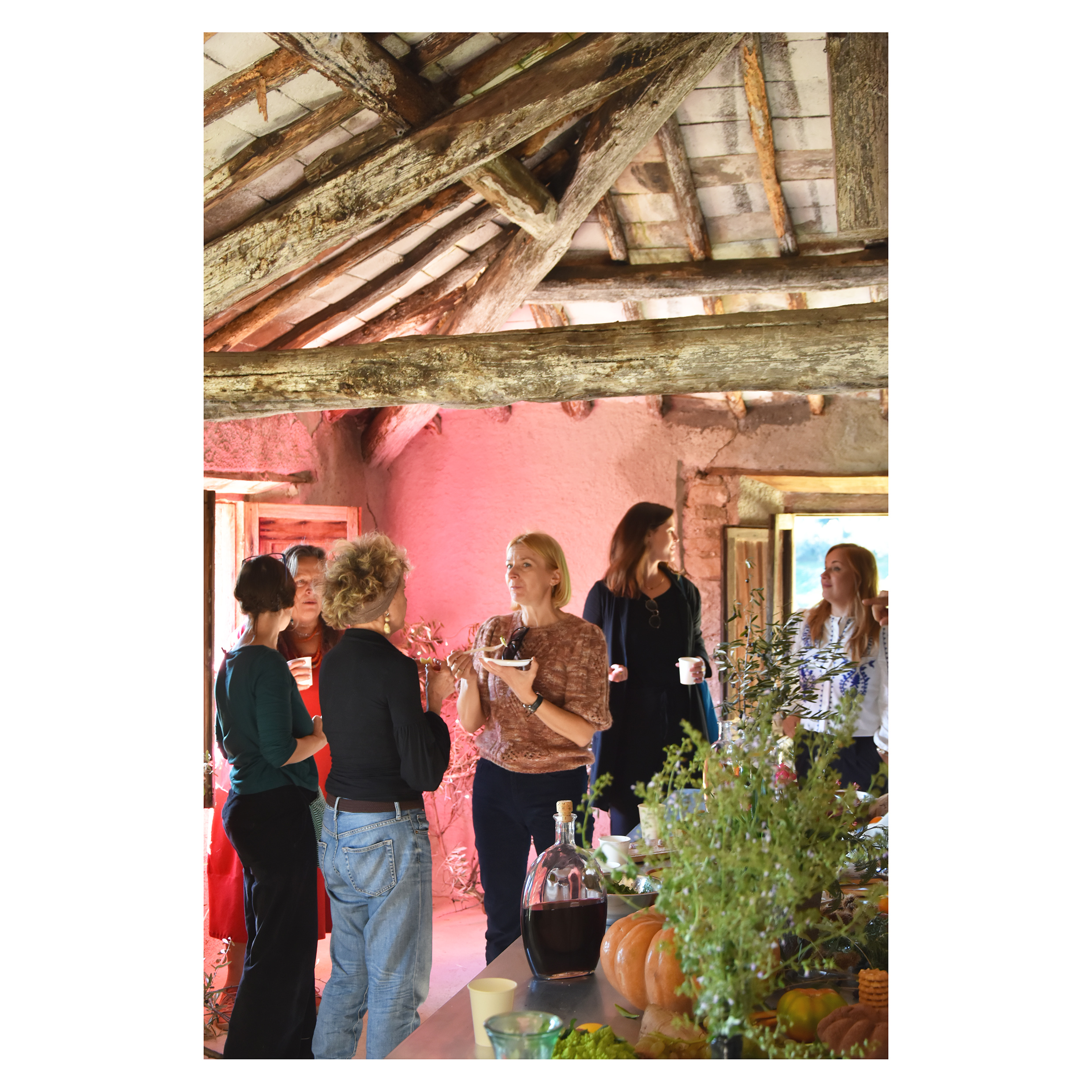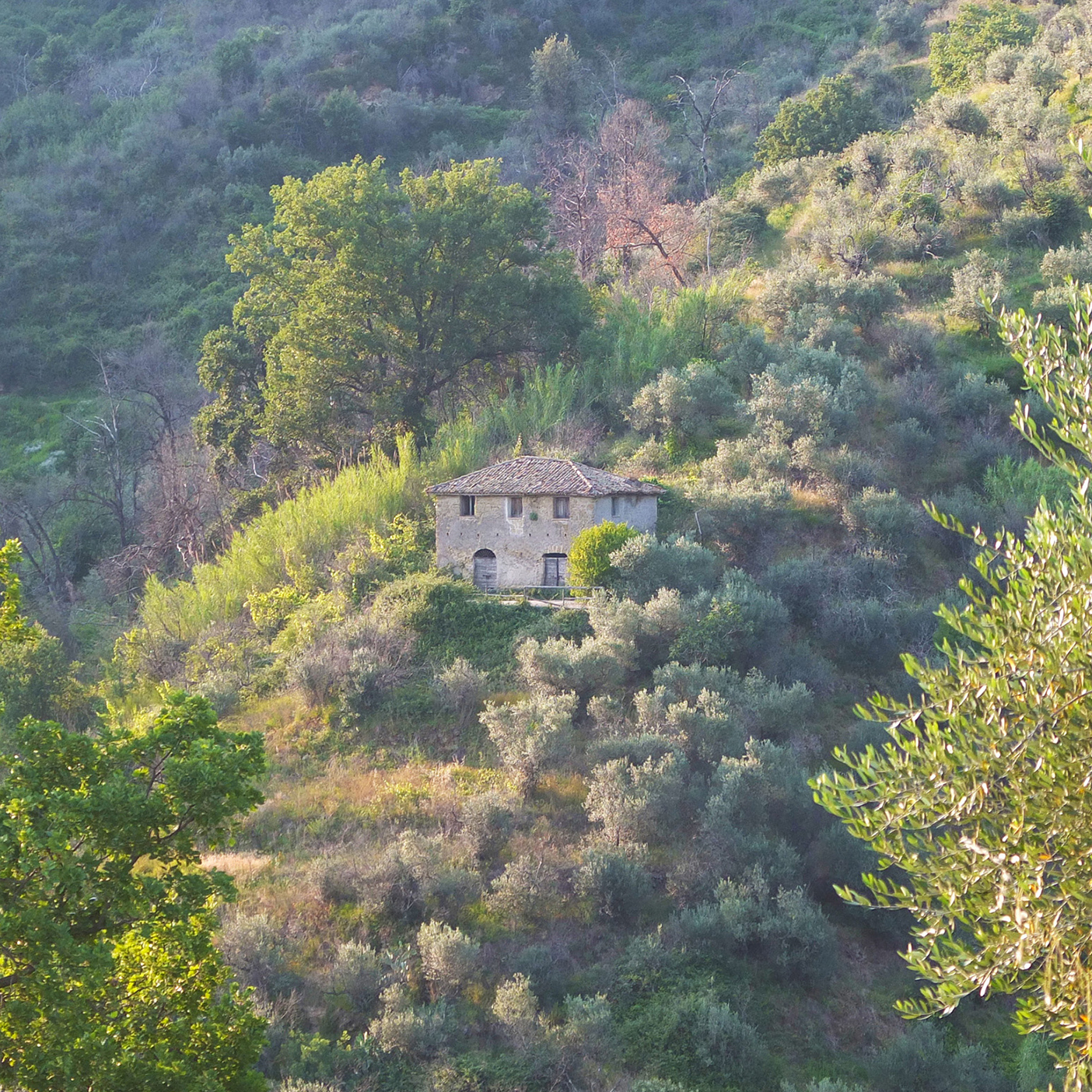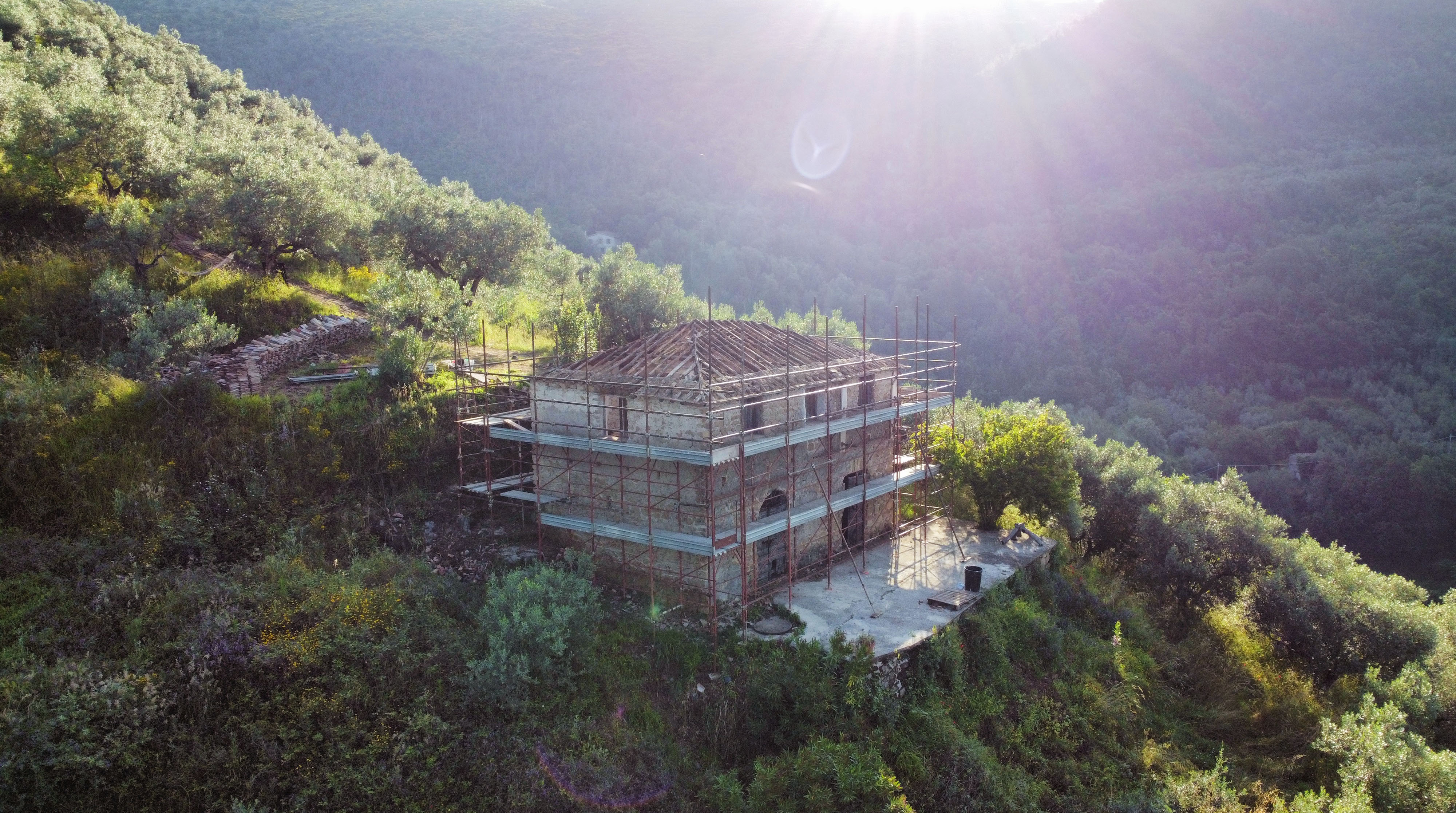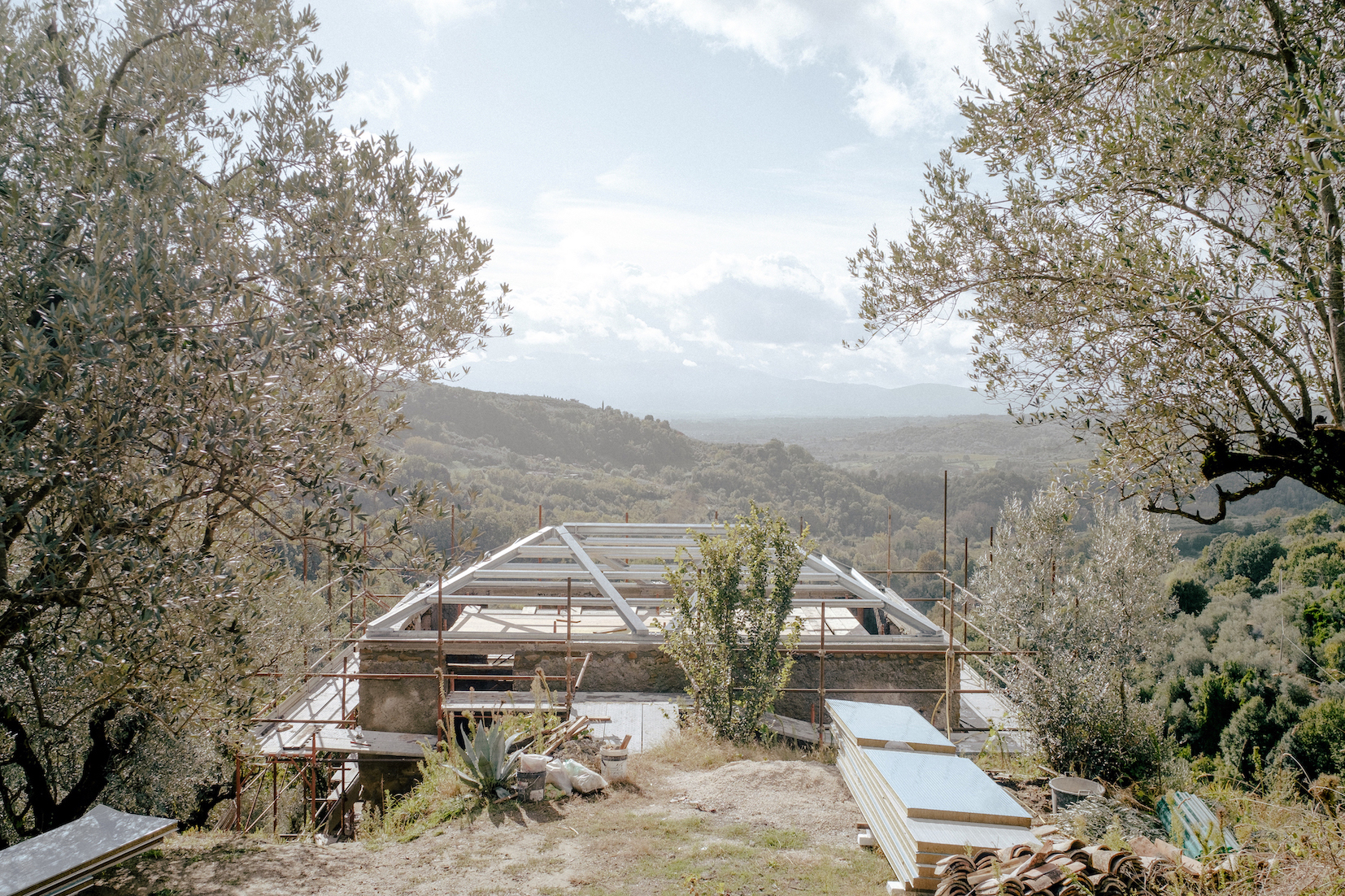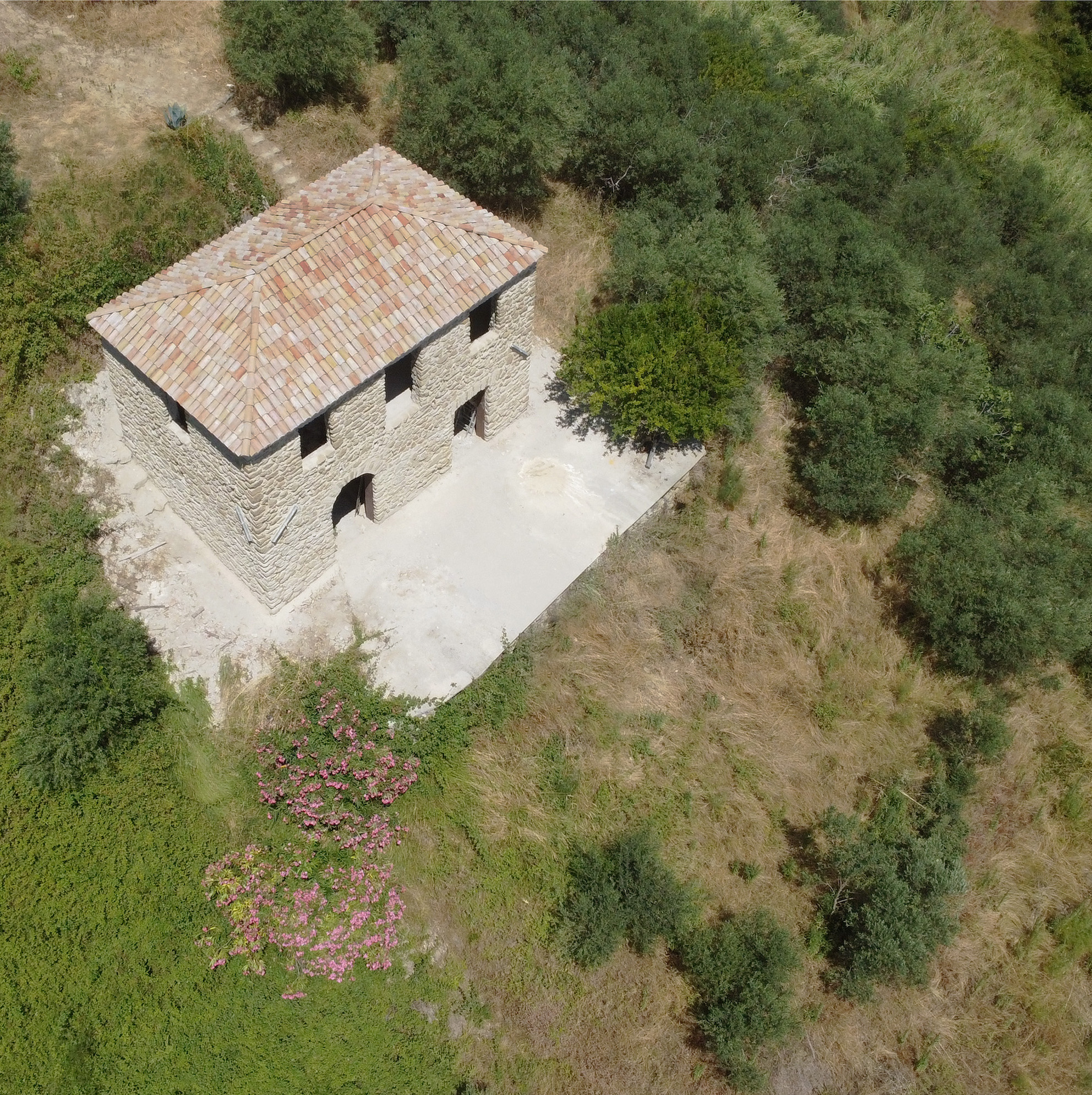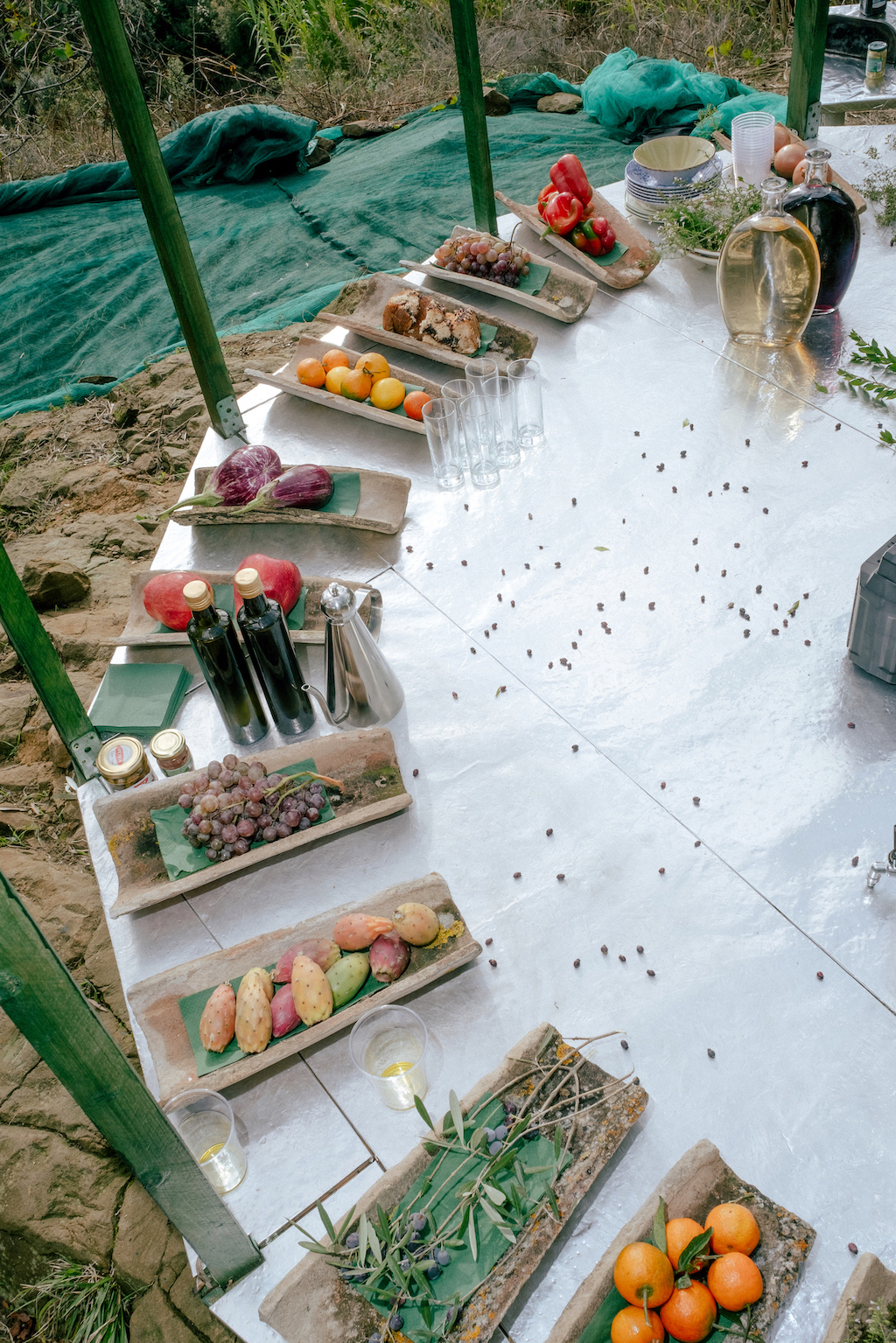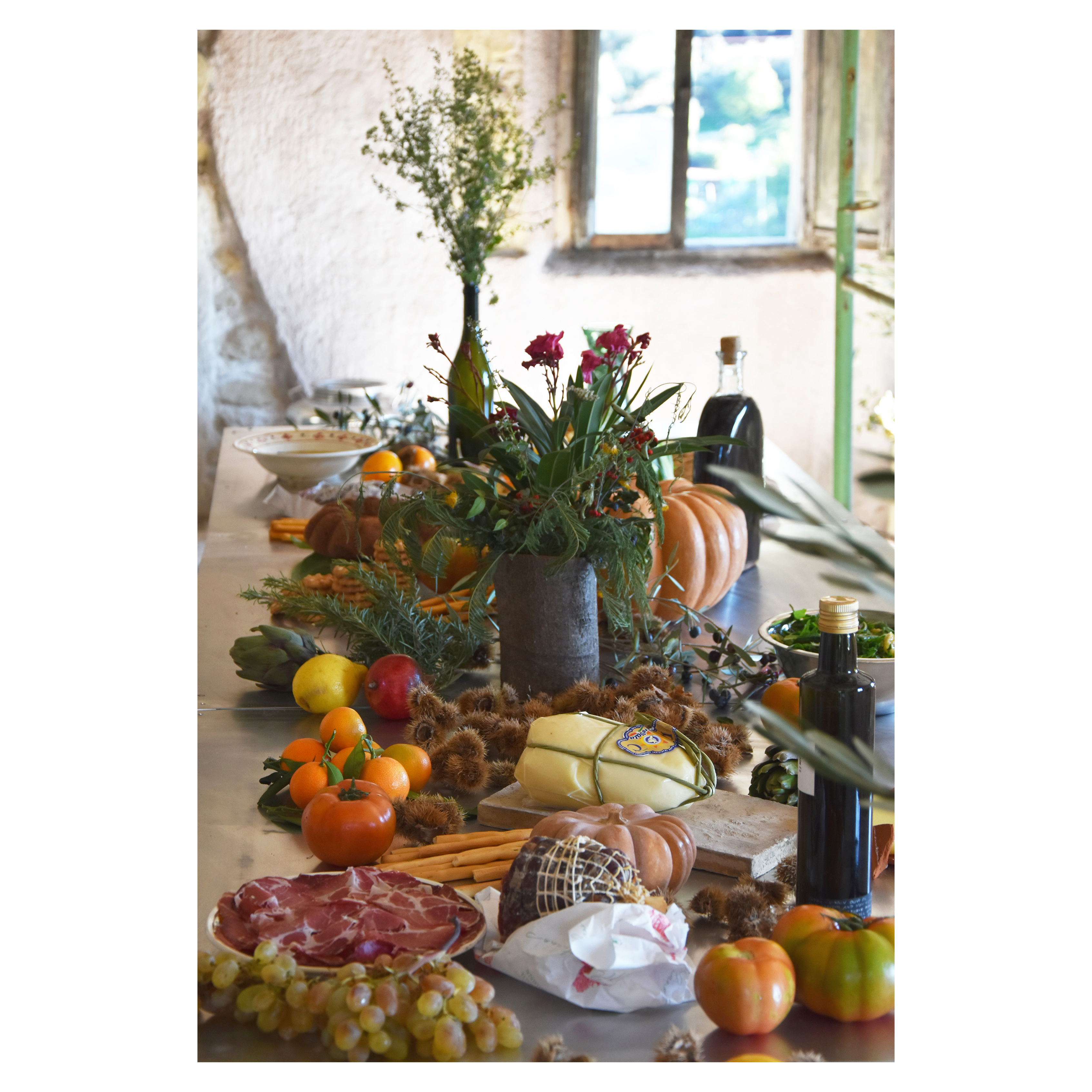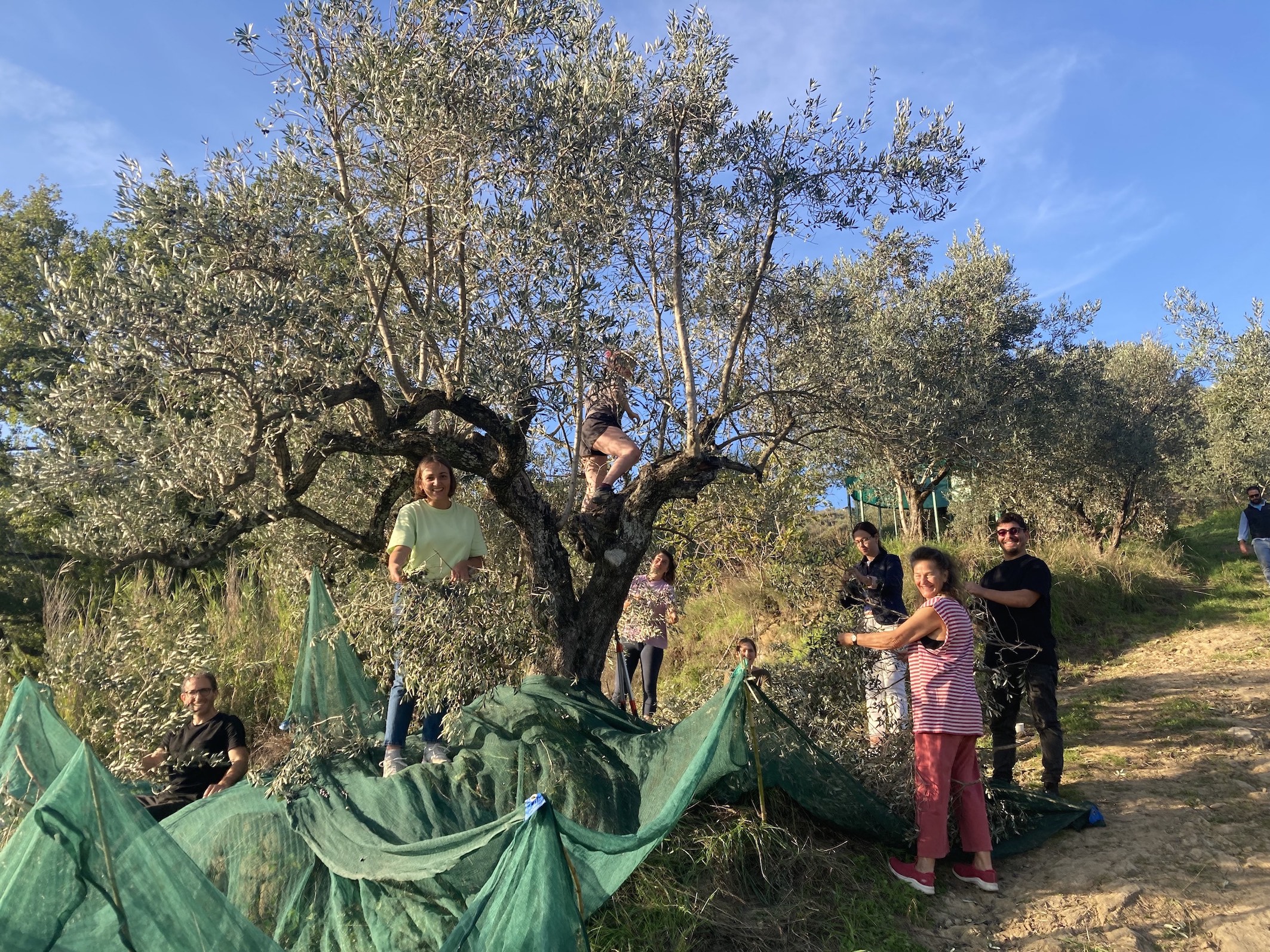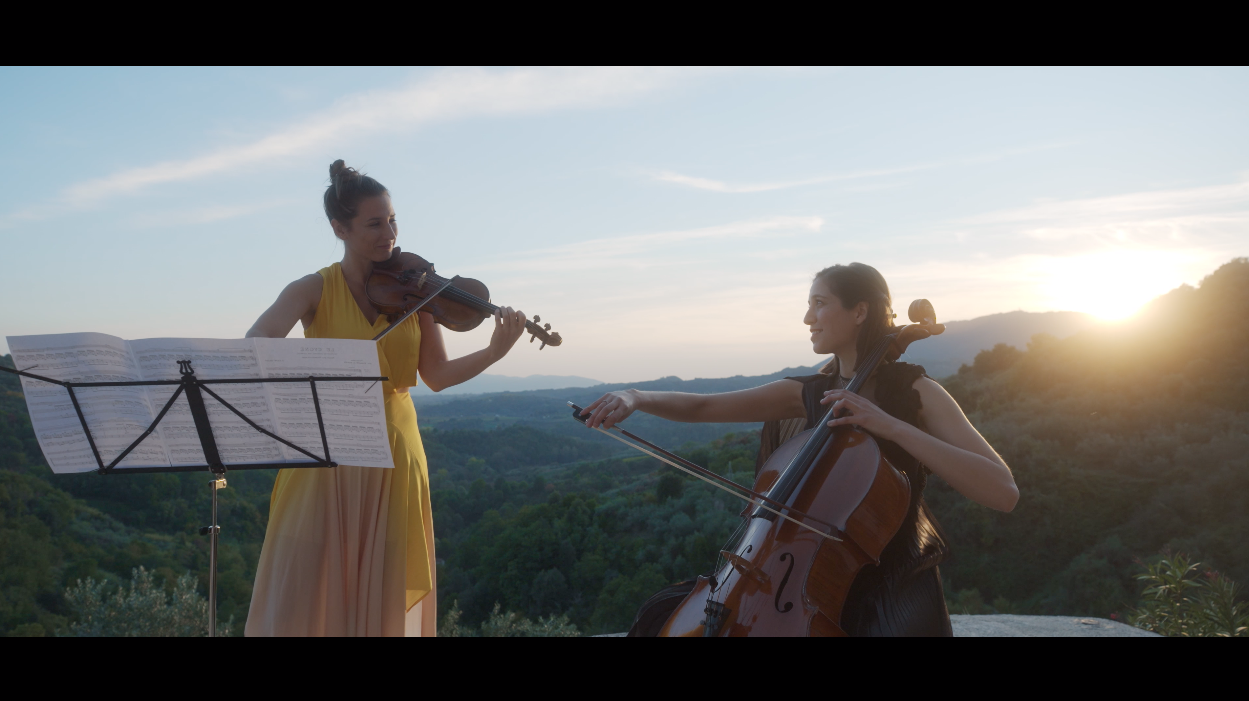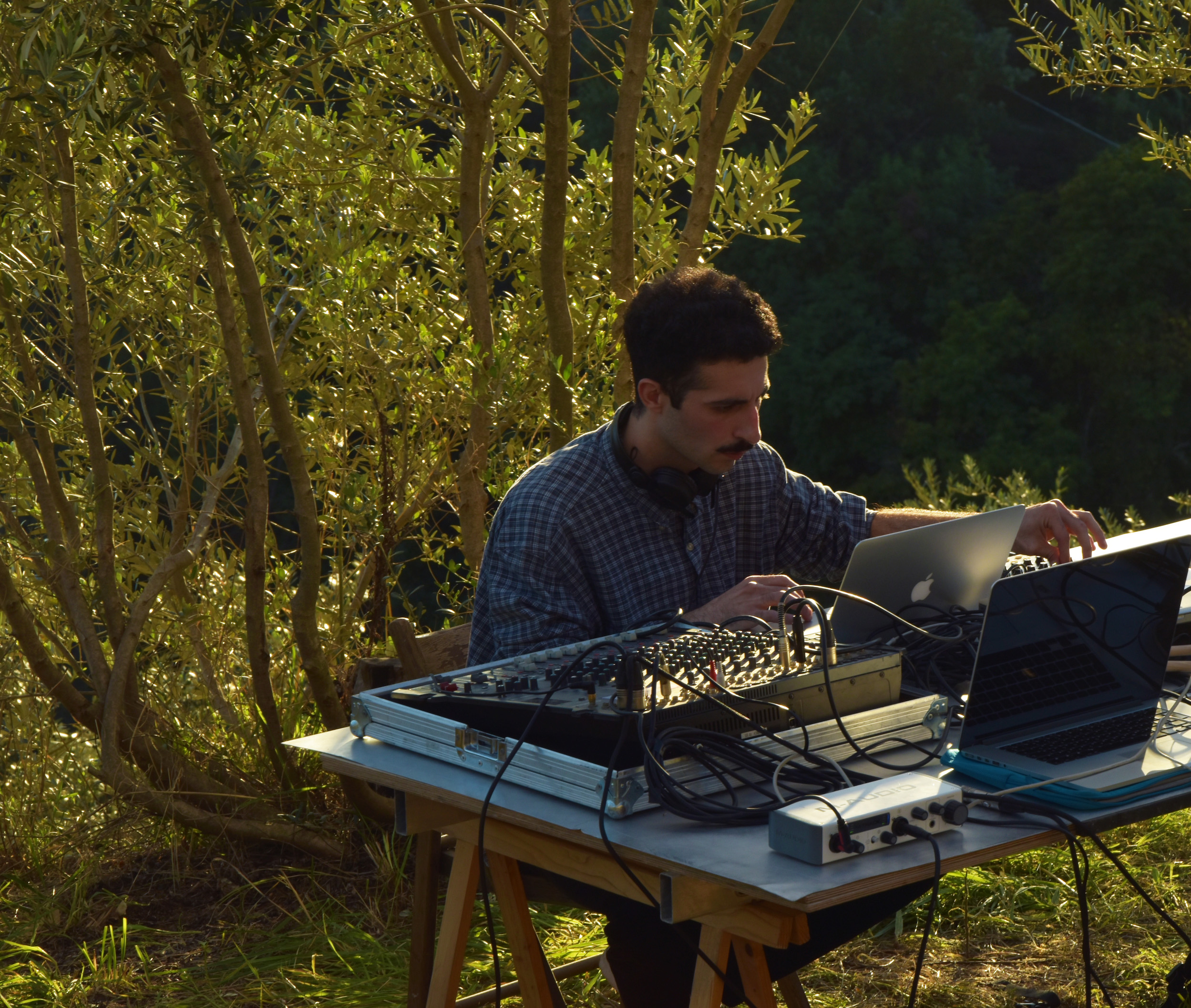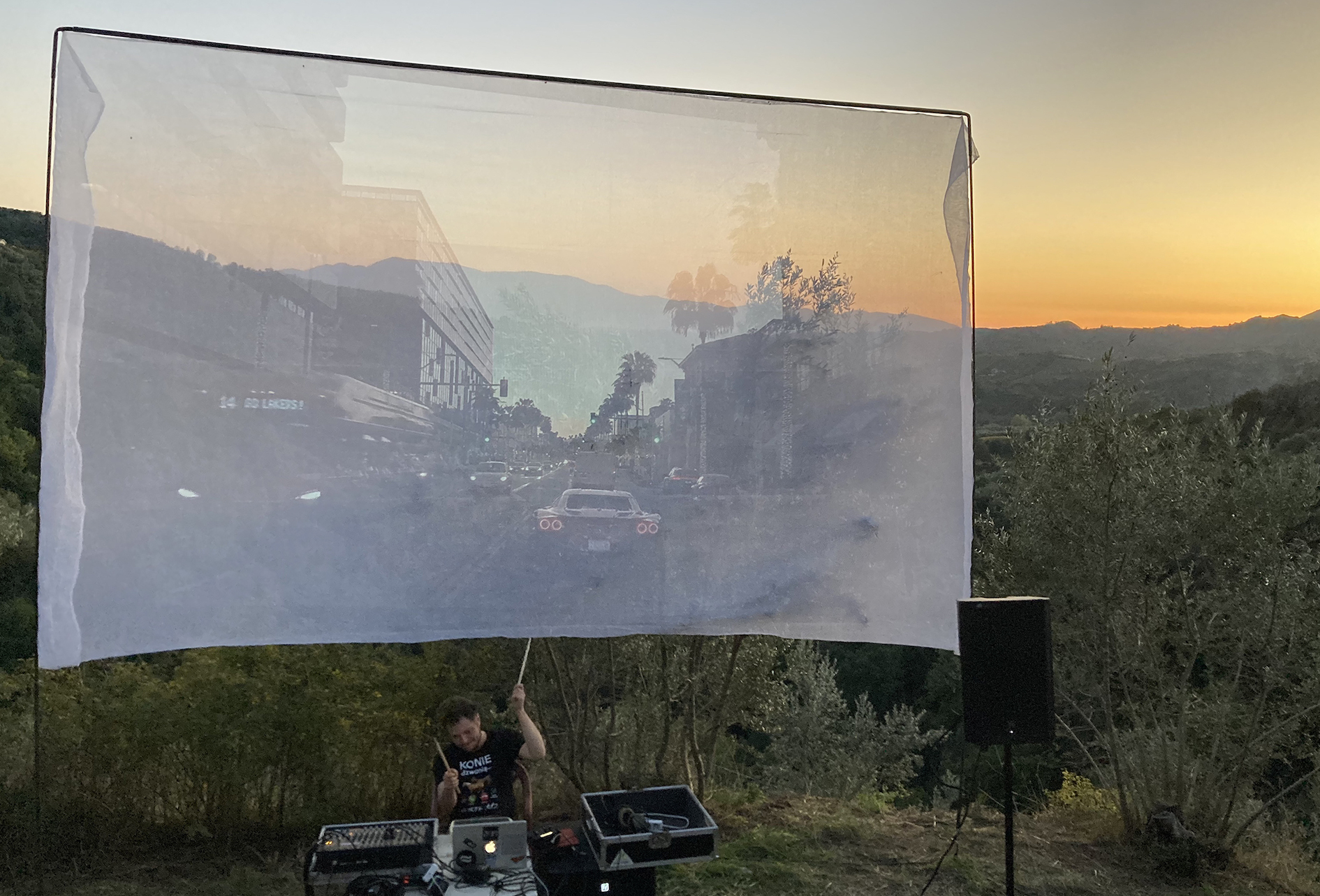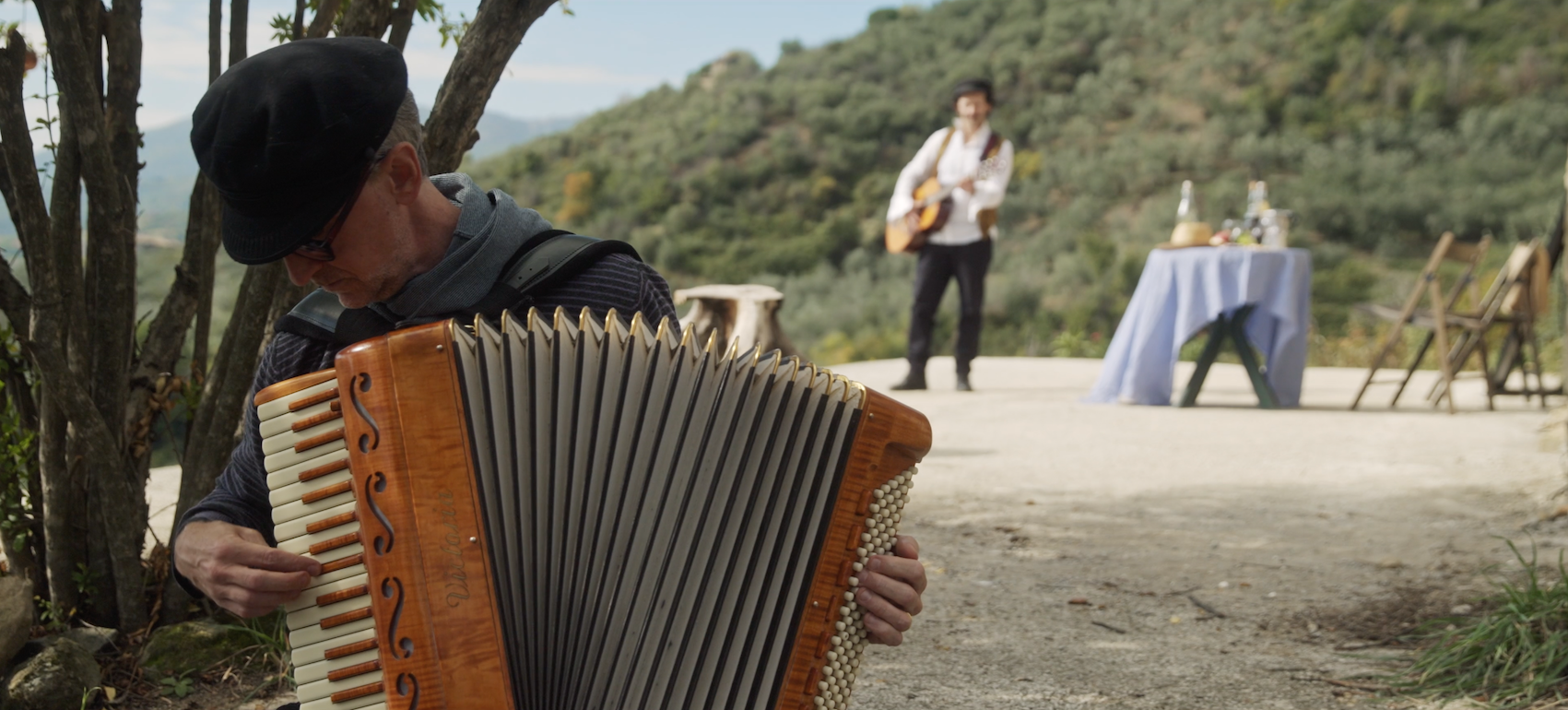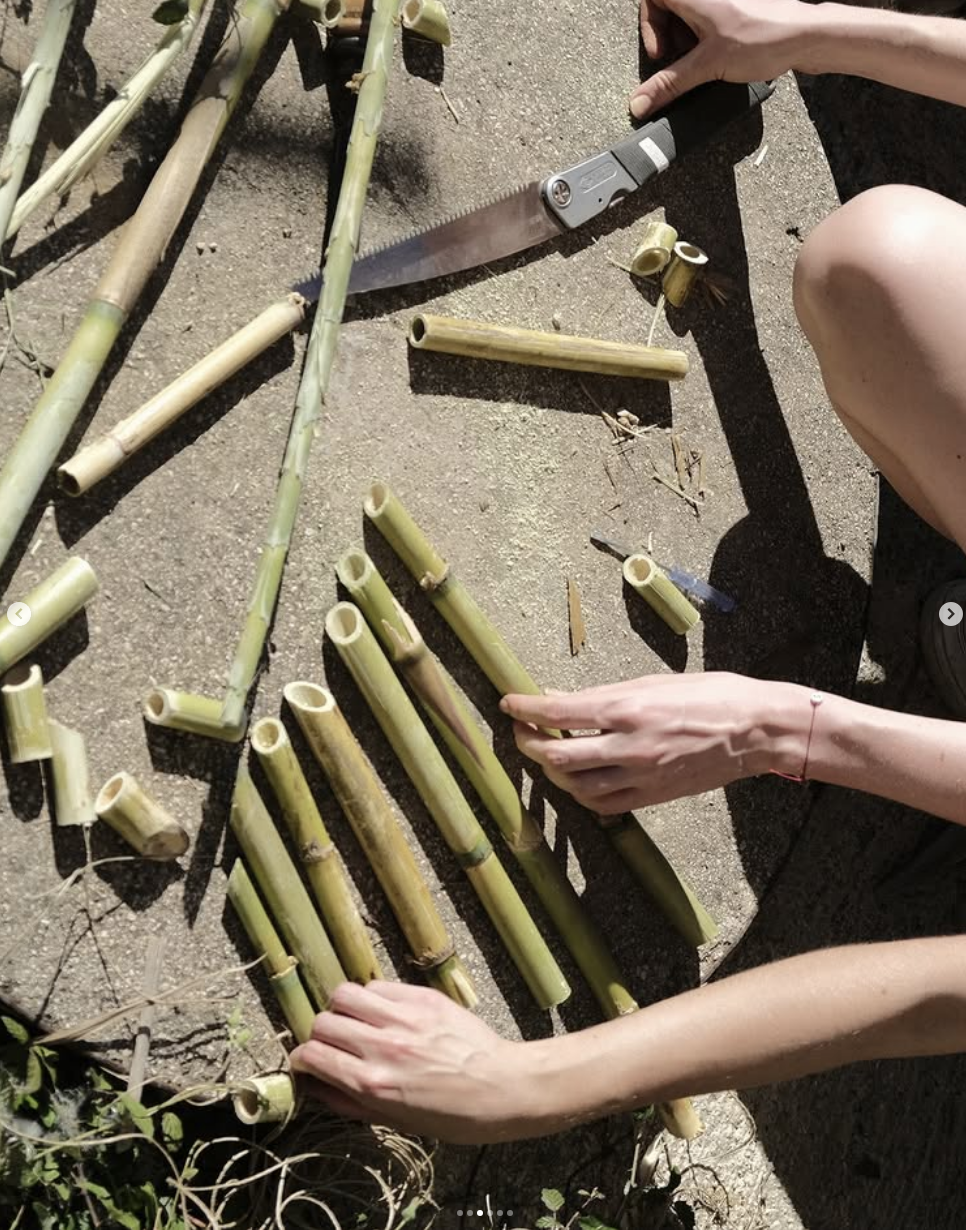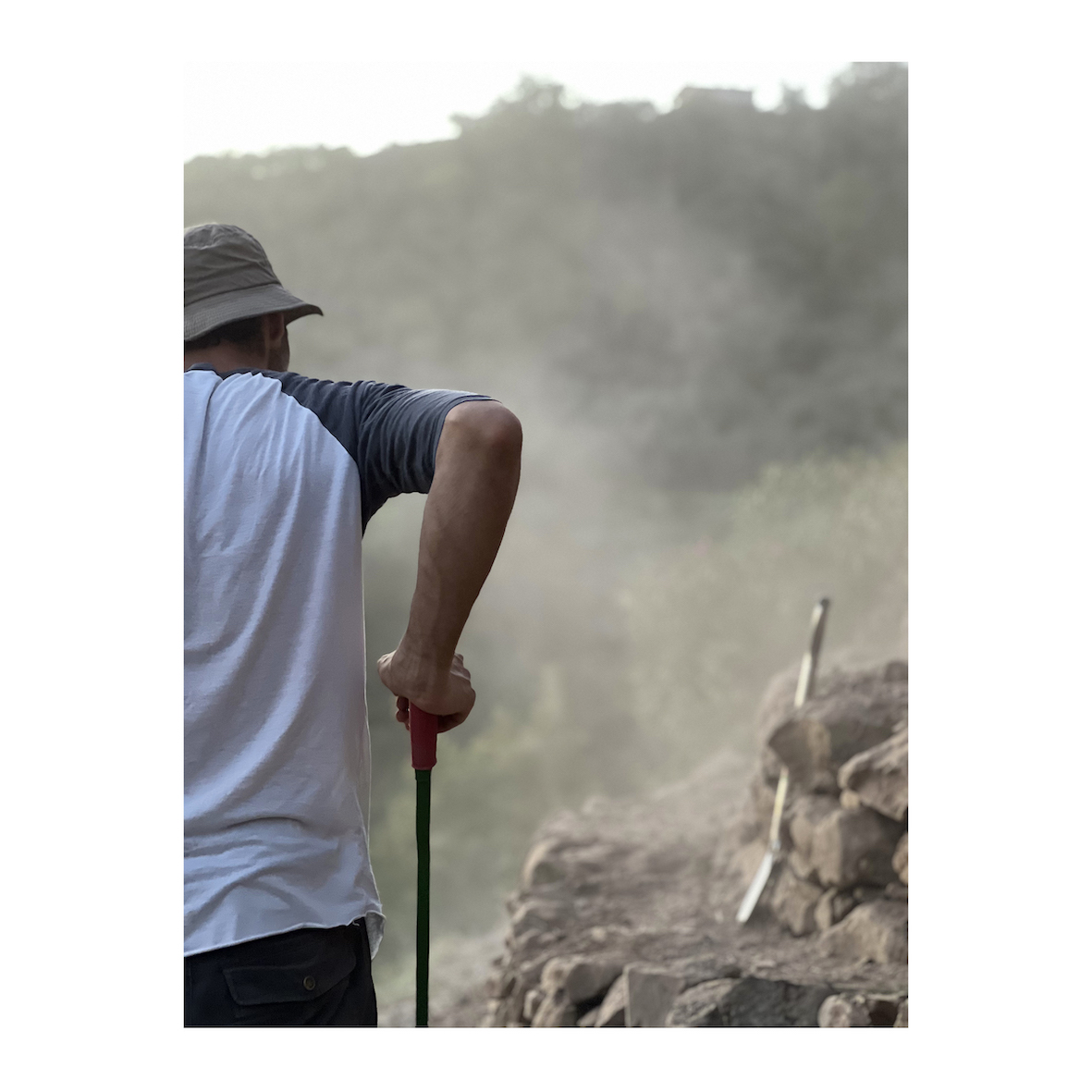Reconnecting with nature
Performing Nature
Artistic re-activation of an abandoned country-house and its surrounding land in Roman countryside
Performing Nature established an international platform for artistic and architectural expression. Its context in the fertile countryside of Olevano Romano, Latium, mostly known for the production of wine and olive oil, creates together with the panoramic position of the old house an inspiring setting for discovery, (re)connection with nature, artistic creation and expression, and sharing of cultural and architectural knowledge.
Italy
Local
Olevano Romano
Mainly rural
It refers to other types of transformations (soft investment)
Yes
2024-11-06
No
No
No
As an individual partnership with other persons/organisation(s)
Performing Nature presents the cultural re-activation process of Casaletto, an old country-house and its land in the picturesque countryside of Olevano Romano, prior to its future establishment as an artistic retreat. This part of Roman countryside, known for its fertile landscape and its depiction by 19th-c. painters, provides the perfect backdrop for exploring the intersection of nature, art, and heritage. The project collectively explored the potential of the site during the process of its transformation as ground for creative expression, and merged culture with nature through a series of public events.
Artists, architects, students, and local communities took part in this dynamic platform for collaboration, experimentation, and performance. The variety of activities fostered a deeper appreciation for the natural world and cultural heritage, and through concerts, architectural and landscaping workshops, and musical harvests, participants not only learned about the land but also engaged with it through the tasting of local products.
A key aspect of the project was the establishment of partnerships with several European cultural institutes, bringing an international dimension to the activities and enriching the overall experience. Local people also played a vital role in the project by promoting the events, hosting educational tours at the olive mill and engaging in the renovation process. Their inclusion ensured the project to be deeply rooted in its cultural and environmental context.
Through these activities, Performing Nature successfully achieved its objectives, serving as a platform for creativity, learning, and cultural exchange, offering participants the opportunity to experience firsthand the benefits of reconnecting with the natural world. The project stands as an example for future initiatives aiming to blend sustainable practices with cultural and artistic exploration.
Artists, architects, students, and local communities took part in this dynamic platform for collaboration, experimentation, and performance. The variety of activities fostered a deeper appreciation for the natural world and cultural heritage, and through concerts, architectural and landscaping workshops, and musical harvests, participants not only learned about the land but also engaged with it through the tasting of local products.
A key aspect of the project was the establishment of partnerships with several European cultural institutes, bringing an international dimension to the activities and enriching the overall experience. Local people also played a vital role in the project by promoting the events, hosting educational tours at the olive mill and engaging in the renovation process. Their inclusion ensured the project to be deeply rooted in its cultural and environmental context.
Through these activities, Performing Nature successfully achieved its objectives, serving as a platform for creativity, learning, and cultural exchange, offering participants the opportunity to experience firsthand the benefits of reconnecting with the natural world. The project stands as an example for future initiatives aiming to blend sustainable practices with cultural and artistic exploration.
performance
exploration
heritage
harvest
collaboration
Performing Nature was driven by the aim to promote sustainability through environmental preservation and the integration of human activity with nature. Located on previously abandoned land, the garden has become a sanctuary for wild varieties of plants and animals, creating a unique ecosystem, unlike neighboring lands, which are focused solely on the cultivation of olive trees. The objective here is to protect and promote this biodiversity while coexisting with human activity. The project encourages slow, sustainable harvests, ensuring that wild plants can flourish without the use of mechanical tools or fertilizers. Animals roam freely, further contributing to the natural balance of the ecosystem.
The house renovation emphasizes restoration over demolition. Although its abandoned and unprotected state could have led to demolition, the project focused on preserving the existing structure. Local communities and resources are engaged, reducing the environmental impact. A lightweight, fully dismountable roof structure has been installed, allowing non-heavy equipment to be used on site. The roof’s ventilated tiling system and the re-cementation process introduced innovative and sustainable methods in order to reduce the carbon footprint of the renovation.
Central to this project is also its inclusive process, which aims to inspire professionals and students in the fields of art and architecture. By preserving nature and heritage, it serves as a model for balancing conservation with modern sustainable practices. The project showcases how eco-conscious design can respect both the environment and the built heritage, providing a blueprint for the future of architecture and construction, with a focus on innovation, sustainability, and community involvement.
The house renovation emphasizes restoration over demolition. Although its abandoned and unprotected state could have led to demolition, the project focused on preserving the existing structure. Local communities and resources are engaged, reducing the environmental impact. A lightweight, fully dismountable roof structure has been installed, allowing non-heavy equipment to be used on site. The roof’s ventilated tiling system and the re-cementation process introduced innovative and sustainable methods in order to reduce the carbon footprint of the renovation.
Central to this project is also its inclusive process, which aims to inspire professionals and students in the fields of art and architecture. By preserving nature and heritage, it serves as a model for balancing conservation with modern sustainable practices. The project showcases how eco-conscious design can respect both the environment and the built heritage, providing a blueprint for the future of architecture and construction, with a focus on innovation, sustainability, and community involvement.
The key objectives of the project were to create a neutral, natural environment that amplifies the beauty of the landscape and of the existing architecture, cultivating a deep connection between people and place. The renovation aimed to highlight natural sandstone and ancient Roman roof tiles of the house, offering a stage showcasing these historical features while blending seamlessly with the surrounding countryside.
To achieve this, the project focused on strategic restructuring to ensure solidity, longevity, and accessibility. This careful balance preserved the architectural integrity while making the space adaptable for various events. Flexibility was a core goal, with design elements ensuring the space could accommodate a wide range of events, from concerts and performances to workshops and cultural exchanges. The project also nurtured an international character, bringing together diverse cultures, ages and backgrounds.
One standout feature of Performing Nature was its commitment to integrating cultural events with the nature. For example, the Raccolta Festival 2 took inspiration from the omnipresent wind in the hilly landscape, exploring both its literal and metaphorical aspects through performances. Other events, like the Pranzo di Raccolta, creatively combined music with the olive picking activity during harvest season, allowing participants to directly engage with the land. Similarly, an architectural workshop explored innovative building systems using plants from the land.
The project also focused on preserving the existing beauty while introducing contemporary, innovative designs that enhanced the existing character. By integrating new ideas with traditional elements, Performing Nature created a dynamic and sustainable space that respects the past while remaining relevant and forward-thinking. This approach makes the project an exemplary model of how design can honor cultural heritage while embracing sustainability and creativity.
To achieve this, the project focused on strategic restructuring to ensure solidity, longevity, and accessibility. This careful balance preserved the architectural integrity while making the space adaptable for various events. Flexibility was a core goal, with design elements ensuring the space could accommodate a wide range of events, from concerts and performances to workshops and cultural exchanges. The project also nurtured an international character, bringing together diverse cultures, ages and backgrounds.
One standout feature of Performing Nature was its commitment to integrating cultural events with the nature. For example, the Raccolta Festival 2 took inspiration from the omnipresent wind in the hilly landscape, exploring both its literal and metaphorical aspects through performances. Other events, like the Pranzo di Raccolta, creatively combined music with the olive picking activity during harvest season, allowing participants to directly engage with the land. Similarly, an architectural workshop explored innovative building systems using plants from the land.
The project also focused on preserving the existing beauty while introducing contemporary, innovative designs that enhanced the existing character. By integrating new ideas with traditional elements, Performing Nature created a dynamic and sustainable space that respects the past while remaining relevant and forward-thinking. This approach makes the project an exemplary model of how design can honor cultural heritage while embracing sustainability and creativity.
Performing Nature emphasized inclusion by creating a horizontally structured approach, which ensures equal participation from both national institutions and creative individuals. The project prioritizes the collective benefits of the natural space over individual interests, underscoring the importance of preserving its beauty as shared heritage. This collaborative spirit supports the idea of inclusive, community-driven engagement.
The project has created an accessible platform by involving key national cultural institutions in Rome, supporting and offering emerging artists and students the chance to experiment and present their work within the wild nature of 'Casaletto'. This inclusive access allows diverse creative voices to engage with the environment, bridging the gap between art and nature.
In addition, the project has built an ongoing connection with its supporters, regularly updating them through social media and newsletters. It offers ways for individual participation, such as purchasing extra virgin olive oil from the land or sponsoring an olive tree, making it easy for people to contribute and feel involved in the project's sustainability.
Over the last five years, the project has nurtured a vibrant exchange between individuals and institutions from diverse backgrounds, disciplines, and nationalities, reflecting the great energy available for performing in nature. This collective effort has resulted in meaningful collaborations, showcasing the transformative power of nature and art when brought together in an inclusive, accessible way. The project's commitment to these values positions it as a model for future cultural initiatives, demonstrating how inclusion, accessibility, and community-driven action can coexist harmoniously.
The project has created an accessible platform by involving key national cultural institutions in Rome, supporting and offering emerging artists and students the chance to experiment and present their work within the wild nature of 'Casaletto'. This inclusive access allows diverse creative voices to engage with the environment, bridging the gap between art and nature.
In addition, the project has built an ongoing connection with its supporters, regularly updating them through social media and newsletters. It offers ways for individual participation, such as purchasing extra virgin olive oil from the land or sponsoring an olive tree, making it easy for people to contribute and feel involved in the project's sustainability.
Over the last five years, the project has nurtured a vibrant exchange between individuals and institutions from diverse backgrounds, disciplines, and nationalities, reflecting the great energy available for performing in nature. This collective effort has resulted in meaningful collaborations, showcasing the transformative power of nature and art when brought together in an inclusive, accessible way. The project's commitment to these values positions it as a model for future cultural initiatives, demonstrating how inclusion, accessibility, and community-driven action can coexist harmoniously.
The project 'Performing Nature' has significantly benefitted local citizens by creating connections between international visitors and the surrounding communities. Local businesses such as olive mills, small bars, and restaurants have seen positive outcomes from increased traffic, organizing for instance tours of the frantoio or tastings of their own wine production. As international visitors engage with the local culture, these businesses have gained exposure and opportunities for economic growth. The project has facilitated a mutually beneficial relationship, bringing a new influx of customers while simultaneously allowing visitors to experience authentic local products and hospitality.
The land and house, while being privately owned, have been kept open to the public. This has ensured that both the local community and international visitors have access to the location’s unique biodiversity and cultural experiences. By offering this "natural playground" as alternative to public parks or fenced private gardens, the project has created a space where people can connect with nature, learn, and explore freely, enriching their understanding of the environment.
The involvement of local citizens has been crucial to the success of 'Performing Nature'. Local people have not only benefitted economically but have also played an active role in the cultural exchange. They have contributed to shaping the experience for visitors by sharing their traditions, history, and local knowledge. In turn, this interaction has helped to solidify the connection between local residents and regional, national, and international actors. This exchange has opened new perspectives and opportunities, enriching the relationship between countryside and city, and fostering a sense of mutual benefit. The project has allowed for cross-cultural dialogue between people of all ages and backgrounds, bridging communities and promoting understanding.
The land and house, while being privately owned, have been kept open to the public. This has ensured that both the local community and international visitors have access to the location’s unique biodiversity and cultural experiences. By offering this "natural playground" as alternative to public parks or fenced private gardens, the project has created a space where people can connect with nature, learn, and explore freely, enriching their understanding of the environment.
The involvement of local citizens has been crucial to the success of 'Performing Nature'. Local people have not only benefitted economically but have also played an active role in the cultural exchange. They have contributed to shaping the experience for visitors by sharing their traditions, history, and local knowledge. In turn, this interaction has helped to solidify the connection between local residents and regional, national, and international actors. This exchange has opened new perspectives and opportunities, enriching the relationship between countryside and city, and fostering a sense of mutual benefit. The project has allowed for cross-cultural dialogue between people of all ages and backgrounds, bridging communities and promoting understanding.
At the local level, various actors contributed to the project’s design and implementation. The frantoio (olive mill) played a key role by offering tours and sharing knowledge about olive pressing, enhancing the visitors’ experience. Local building corporations promoted sustainable renovation methods, applying eco-friendly practices to the site. Local gardeners shared their expertise on pruning, identifying wild plants, and conducted workshops. The Villa Massimo, the cultural German institute in Rome, facilitated connections by opening its network, including satellite locations in Olevano Romano, and supported the project’s interaction with their fellows and visitors.
Regionally, the connection to Rome played a significant role. Indirectly the Villa Massimo but specifically the Polish Institute (Istituto Polacco di Roma) collaborated in shaping the project, brainstorming on event themes, proposing the involvement of appropriate artists, and promoting the countryside’s cultural richness in their own network. Their involvement also brought a certain amount of visitors from Rome, enhancing the project’s visibility and impact.
Nationally and at the European level, those cultural institutes supported the project by contributing financially to the artistic performances immersed in nature. Goodmesh, a significant stakeholder from the Netherlands, also provided both financial and conceptual backing for the creation of a stage for renowned international artists during the first Raccolta Festival in 2021. Their contribution also extended to event documentation, ensuring the project's legacy and presentation.
This multi-level engagement enhanced the project’s success by fostering collaboration, expanding its reach, and promoting a blend of local heritage, cultural exchange, and international visibility.
Regionally, the connection to Rome played a significant role. Indirectly the Villa Massimo but specifically the Polish Institute (Istituto Polacco di Roma) collaborated in shaping the project, brainstorming on event themes, proposing the involvement of appropriate artists, and promoting the countryside’s cultural richness in their own network. Their involvement also brought a certain amount of visitors from Rome, enhancing the project’s visibility and impact.
Nationally and at the European level, those cultural institutes supported the project by contributing financially to the artistic performances immersed in nature. Goodmesh, a significant stakeholder from the Netherlands, also provided both financial and conceptual backing for the creation of a stage for renowned international artists during the first Raccolta Festival in 2021. Their contribution also extended to event documentation, ensuring the project's legacy and presentation.
This multi-level engagement enhanced the project’s success by fostering collaboration, expanding its reach, and promoting a blend of local heritage, cultural exchange, and international visibility.
'Performing Nature' encompassed a diverse range of disciplines, including architecture, landscape gardening, agriculture, culinary arts, music (acoustic, electronic, lyrical), cinema (documentary and short film), and photography. These fields interacted closely from the outset, creating a dynamic and cross-disciplinary environment.
The project’s design and implementation brought together architects, local experts, and artists. At first, two architects collaborated on the renovation of the site, while learning from local specialists about the land’s natural richness. This led to the early recognition of the land as source of inspiration, and to the introduction of multidisciplinary artists, transforming the location into a universal and neutral platform for creative collaborations.
The interaction between these disciplines was vital for the success of various events. For example, during a 3-day workshop in October 2022, students of architecture from TU Munich experimented with local building techniques and materials, enriching the site with innovative, sustainable solutions. They also explored the garden’s biodiversity, aesthetics, and accessibility, by taking part in the olive harvesting rituals, and by creating a path to access the river down the land. They also built a tribune connected to the terrace using stones from the land, and installed a structure for outdoor screenings. The workshop concluded with an event featuring electronic music, with visual screenings interacting with the landscape at sunset. A week later, the Raccolta Festival #2 showcased musical live acts, documentary and short film premieres, and a tasting buffet with local products. This event demonstrated a successful collaboration where architecture, agriculture, music, and cinema seamlessly blended to create a memorable experience, appreciated by both local and international audiences. The project was in this way enriched with multiple perspectives and fostered a vibrant exchange of ideas
The project’s design and implementation brought together architects, local experts, and artists. At first, two architects collaborated on the renovation of the site, while learning from local specialists about the land’s natural richness. This led to the early recognition of the land as source of inspiration, and to the introduction of multidisciplinary artists, transforming the location into a universal and neutral platform for creative collaborations.
The interaction between these disciplines was vital for the success of various events. For example, during a 3-day workshop in October 2022, students of architecture from TU Munich experimented with local building techniques and materials, enriching the site with innovative, sustainable solutions. They also explored the garden’s biodiversity, aesthetics, and accessibility, by taking part in the olive harvesting rituals, and by creating a path to access the river down the land. They also built a tribune connected to the terrace using stones from the land, and installed a structure for outdoor screenings. The workshop concluded with an event featuring electronic music, with visual screenings interacting with the landscape at sunset. A week later, the Raccolta Festival #2 showcased musical live acts, documentary and short film premieres, and a tasting buffet with local products. This event demonstrated a successful collaboration where architecture, agriculture, music, and cinema seamlessly blended to create a memorable experience, appreciated by both local and international audiences. The project was in this way enriched with multiple perspectives and fostered a vibrant exchange of ideas
The innovative character of 'Performing Nature' lies not only in experimental actions and proposals, like the merging of electronic music with nature and traditional harvesting rituals or the application of innovative architectural solutions for the renovation of the house, but also in its organic, process-based approach. Unlike mainstream projects that focus on finalizing the establishment of a place or a structure before the introduction of the activities, 'Performing Nature' emphasizes the continuous cultural reactivation of the site from the start. The project integrates the ongoing transformation of the place into its very core, focusing on the process rather than the end result.
This approach is innovative because it allows for flexibility and adaptability throughout the project's development. Rather than defining the entire structure of the retreat from the beginning, the project evolves in response to the needs of the community and the dynamic nature of the site. The unfinished status of the location and its organic growth have created space for spontaneous events and activities, allowing for a more organic community engagement.
With the development of the artistic retreat as an objective in finality, the project 'Performing Nature' is a gradual, preliminary and organic process. It is a continuous activation period—an evolving space where connections are formed, trust is built among involved parties, and the transformation of the site is thoughtfully shaped over time. This slow, deliberate approach ensures that ecological considerations and long-term sustainability are embedded in the project, making them core strategies throughout. By prioritizing the journey over a pre-defined outcome, the project fosters a deeper connection to the land and the community, distinguishing it from more traditional, result-driven initiatives.
This approach is innovative because it allows for flexibility and adaptability throughout the project's development. Rather than defining the entire structure of the retreat from the beginning, the project evolves in response to the needs of the community and the dynamic nature of the site. The unfinished status of the location and its organic growth have created space for spontaneous events and activities, allowing for a more organic community engagement.
With the development of the artistic retreat as an objective in finality, the project 'Performing Nature' is a gradual, preliminary and organic process. It is a continuous activation period—an evolving space where connections are formed, trust is built among involved parties, and the transformation of the site is thoughtfully shaped over time. This slow, deliberate approach ensures that ecological considerations and long-term sustainability are embedded in the project, making them core strategies throughout. By prioritizing the journey over a pre-defined outcome, the project fosters a deeper connection to the land and the community, distinguishing it from more traditional, result-driven initiatives.
The methodology of 'Performing Nature' is grounded in its role as a mediator between established institutions, the local community, and emerging artists or architects seeking space for free experimentation with wild nature. The project fosters connections among these diverse groups, using the unique beauty of the location as a shared resource, and ensuring the process of transformation is inclusive and generates a wide exchange and expansion of knowledge.
Another key aspect of the project’s approach is its thematic focus for each event. These themes, which link art and nature, provide a foundation for individual artistic responses and are carefully chosen to reflect the essence of the land and its symbolic significance. For example, past editions have explored the theme of the wind, both as a constant natural force on the land and as a metaphor for change. Another theme, the harvest, connected art to tradition, rituals, and the relationship between human activity and nature. These thematic explorations inspire the artists to create works that respond directly to the environment, encouraging deep engagement with both the landscape and its cultural context.
In this way, 'Performing Nature' integrates creative expression with environmental awareness, offering a flexible and collaborative space where art, nature, and community can interact and evolve together. The project’s methodology allows for a dynamic and organic process, enabling ongoing transformation while maintaining a strong connection to the land and its cultural heritage.
Another key aspect of the project’s approach is its thematic focus for each event. These themes, which link art and nature, provide a foundation for individual artistic responses and are carefully chosen to reflect the essence of the land and its symbolic significance. For example, past editions have explored the theme of the wind, both as a constant natural force on the land and as a metaphor for change. Another theme, the harvest, connected art to tradition, rituals, and the relationship between human activity and nature. These thematic explorations inspire the artists to create works that respond directly to the environment, encouraging deep engagement with both the landscape and its cultural context.
In this way, 'Performing Nature' integrates creative expression with environmental awareness, offering a flexible and collaborative space where art, nature, and community can interact and evolve together. The project’s methodology allows for a dynamic and organic process, enabling ongoing transformation while maintaining a strong connection to the land and its cultural heritage.
Several elements of 'Performing Nature' could be replicated or transferred to other places, groups, and contexts. One key aspect is the role of the caretaker of a place and mediator of new relations, establishing trusted communication between unique locations and creative practitioners. This model of defining the place itself as a connector between artists, architects, and local communities can be applied in various settings to stimulate collaboration, creativity, and cultural exchange.
Another replicable aspect is the approach of developing activities such as workshops or concerts as catalysts for a site’s transformation. Rather than waiting for a space to be fully established, this methodology encourages engaging with the site in its evolving, unfinished state. This process allows for experimentation, innovation, and the organic growth of the site through direct interaction with artists and participants. It fills a gap in many ongoing projects by providing a space for informal exchanges, fostering connections between individuals and established institutions, and promoting a horizontal, collaborative structure.
This approach has proven to be highly effective, particularly in contexts where there is a need for flexible spaces that encourage experimentation and new ideas. It enables groups to establish connections in a low-pressure environment while contributing to the development of the location. By focusing on the process of transformation rather than the final product, it creates a dynamic, inclusive, and creative atmosphere that can be adapted to a wide range of locations and beneficiary groups.
Another replicable aspect is the approach of developing activities such as workshops or concerts as catalysts for a site’s transformation. Rather than waiting for a space to be fully established, this methodology encourages engaging with the site in its evolving, unfinished state. This process allows for experimentation, innovation, and the organic growth of the site through direct interaction with artists and participants. It fills a gap in many ongoing projects by providing a space for informal exchanges, fostering connections between individuals and established institutions, and promoting a horizontal, collaborative structure.
This approach has proven to be highly effective, particularly in contexts where there is a need for flexible spaces that encourage experimentation and new ideas. It enables groups to establish connections in a low-pressure environment while contributing to the development of the location. By focusing on the process of transformation rather than the final product, it creates a dynamic, inclusive, and creative atmosphere that can be adapted to a wide range of locations and beneficiary groups.
1) 'Reconnecting with nature': In response to the density, pollution, and media saturation of cities like Rome, the project offers a space where people can reconnect with nature and small, community-based environments. It serves as a retreat for those seeking a break from the pressures of urban life. Additionally, it provides artists with an appropriate stage to showcase their work, addressing the challenges they often face in finding spaces for creative expression in cities.
2) 'A neutral ground': The project responds to global societal and political issues by offering a neutral space free from pre-defined identities, focusing solely on the natural beauty and "as-found" character of the site. This openness creates a welcoming environment for diverse groups, fostering a sense of inclusivity and providing a platform for open dialogue, away from the influence of societal and political divisions.
3) 'A natural and social ecosystem': In a world marked by the individualization and privatization of processes, 'Performing Nature' emphasizes the importance of reconnecting with natural and social ecosystems. The project promotes circularity in architecture, agriculture, and social structures, encouraging sustainable practices and stimulating a sense of community. By integrating ecological and social principles into its design and activities, it provides a model for sustainable occupation and creative collaboration.
Through these approaches, the project 'Performing Nature' offered local, context-specific solutions that address global challenges, creating a space for environmental, social, and cultural regeneration.
2) 'A neutral ground': The project responds to global societal and political issues by offering a neutral space free from pre-defined identities, focusing solely on the natural beauty and "as-found" character of the site. This openness creates a welcoming environment for diverse groups, fostering a sense of inclusivity and providing a platform for open dialogue, away from the influence of societal and political divisions.
3) 'A natural and social ecosystem': In a world marked by the individualization and privatization of processes, 'Performing Nature' emphasizes the importance of reconnecting with natural and social ecosystems. The project promotes circularity in architecture, agriculture, and social structures, encouraging sustainable practices and stimulating a sense of community. By integrating ecological and social principles into its design and activities, it provides a model for sustainable occupation and creative collaboration.
Through these approaches, the project 'Performing Nature' offered local, context-specific solutions that address global challenges, creating a space for environmental, social, and cultural regeneration.
'Performing Nature' created a series of impactful events where cross-disciplinary and international artists and architects had the opportunity to present new work and experiment in a natural environment. This allowed them to establish connections with local communities and national institutions. As a result, Casaletto Artistic Ermitage has emerged as a unique platform for free experimentation and a neutral artistic space within a lush natural setting.
The transformation process was enriched by the sharing ideology of the project. The integrated events and workshops included a wide range of expertise and ideas, making the project a collective journey. This collaborative approach infused the site’s development with diverse perspectives and creativity.
The involvement of diverse creative groups led to mutual learning, with participants rediscovering traditional and natural elements. This included the recognition and use of wild flora and fauna, circular building techniques using materials from the site, and the revival of agricultural traditions through collaboration with a younger, creative audience.
Local communities, businesses, and citizens from surrounding municipalities benefited from increased visibility as the project attracted international visitors from various backgrounds. The influx of visitors introduced new perspectives to the locals, raising awareness of their traditional crafts, history, and identities. These communities had the opportunity to share their knowledge of nature with creative individuals, fostering exchange and understanding of how to strengthen the involvement of nature into human activities.
The project successfully established a diverse group of followers, participants, and supporters from various nationalities, social groups, and age ranges. This growing network is vital for the future development of the project, reflecting the demand for initiatives that connect creativity with nature.
The transformation process was enriched by the sharing ideology of the project. The integrated events and workshops included a wide range of expertise and ideas, making the project a collective journey. This collaborative approach infused the site’s development with diverse perspectives and creativity.
The involvement of diverse creative groups led to mutual learning, with participants rediscovering traditional and natural elements. This included the recognition and use of wild flora and fauna, circular building techniques using materials from the site, and the revival of agricultural traditions through collaboration with a younger, creative audience.
Local communities, businesses, and citizens from surrounding municipalities benefited from increased visibility as the project attracted international visitors from various backgrounds. The influx of visitors introduced new perspectives to the locals, raising awareness of their traditional crafts, history, and identities. These communities had the opportunity to share their knowledge of nature with creative individuals, fostering exchange and understanding of how to strengthen the involvement of nature into human activities.
The project successfully established a diverse group of followers, participants, and supporters from various nationalities, social groups, and age ranges. This growing network is vital for the future development of the project, reflecting the demand for initiatives that connect creativity with nature.

